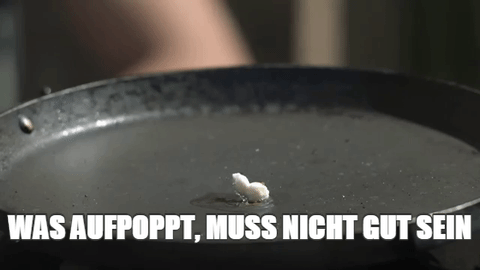Pop-ups können von Google als Hauptinhalt identifiziert werden. Dies kann die Rankings negativ beeinflussen.
Alle Fakten auf einen Blick
- Pop-ups können von Google als Hauptinhalt identifiziert werden.
- Sie werden als Manipulationsversuch im Sinne von Cloaking angesehen.
- Der User reagiert oft genervt, was die User-Experience negativ beeinflussen kann.
- Die Folge: Pop-ups können sich durchaus negativ auf die Rankings auswirken.
Der negative Einfluss von Pop-ups näher beleuchtet
Bereits im November letztes Jahres kündigte Google an, dass Mobile-Seiten auf denen ein Vollbild-Overlay angezeigt wird, abgestraft werden. Im Google Webmaster Hangout im Juli 2016 wurde John Mueller (Senior Webmaster Trends Analyst bei Google Switzerland) Folgendes gefragt: „Is there a risk that Googlebot might give higher priority to the content on the pop-up istead of the content behind it?” Seine deutliche Antwort: „That can happen, yeah. That can definitely happen!”
Sieht der Googlebot zuerst das Pop-up und dann erst den richtigen Inhalt der Seite, kann das schnell als Cloaking-Versuch eingestuft werden: „I guess the tricky part here is, if you’re using some kind of a technique to block Googlebot from seeing this specifically, then that might be seen as cloaking to some extent. If users see one version of the page and Googlebot sees something completely different, that wouldn’t really be that great, and that might be something where the webspam team might even say: well, this is so shady, we need to take action on this.“
Pop-ups – ungeliebt auch vom User
Auch aus User-Sicht sind Pop-ups definitiv kontraproduktiv, was auch Jon Mueller bejahte: „I really find these type of sites terribly annoying. And I see complaints from users all the time about these kinds of pop-ups that essentially come up when you’re trying to visit a page and especially when you’re on mobile phone, you need to click that small ‘x’ somewhere in the corner or you have to find that first. That’s really annoying.
So that’s something, at least from me as a user, I would recommend kind of finding a different approach to getting people to sign up, because this is really frustrating, really annoying.[…] I think if you’re focusing on the user and you want to make sure that people stay on your website (…), they recommend it, than probably this is kind of counterproductive to kind of say, well, first go away and then maybe come back and look at our content if you actually really want to see it. Because you lose a lot of people in a case like that.“
Noch ein kleiner Fun-Fact am Rande: Pop-ups wurden schon im Mai 2010 vom Time Magazine zu einer der 50 schlimmsten Erfindungen aller Zeiten gewählt.

Unsere Empfehlung
Es ist eher kontraproduktiv, Pop-Ups anzuzeigen, bevor der Nutzer die Seite überhaupt sieht und sich über die Angebote informieren kann. Niemand will eine Katze im Sack kaufen. Es ist sinnvoller, Pop-Ups auf einer Unterseite zu zeigen, oder erst, nachdem der Nutzer länger auf einer Seite war. So können wir besser einschätzen, dass er Interesse hat und mehr wissen möchte. Dies wäre dann eine Art Interaktion mit den Usern und würde zur Kontaktanbahnung dienen.
Bildnachweis: Das Beitragsbild Popcorn ist ein Screenshot des Youtube-Clips „Popping Popcorn in super Slow Motion – The Slow Mo Guys“ by The Slow Mo Guys.

